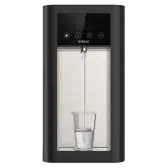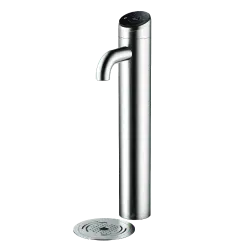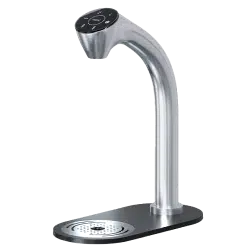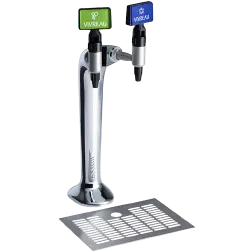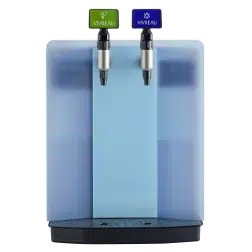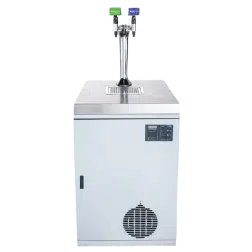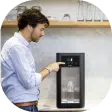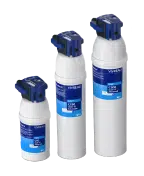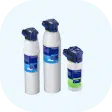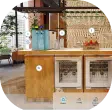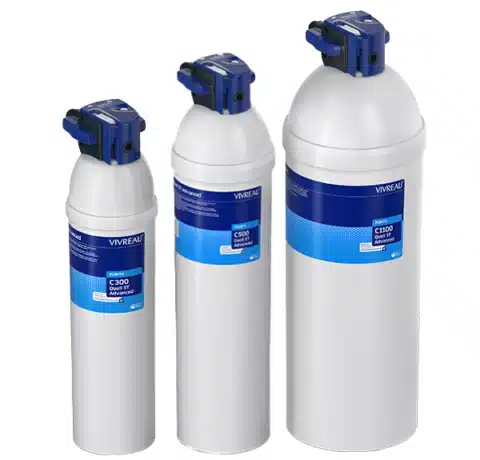Watch our webinar on limescale with Maria and Anastasia!
“Bad coffee led me to discover limescale buildup in my friend’s brewer. A quick descale, and the flavor was totally transformed.”
That was a recent experience of Maria Cleaveland, a coffee expert with Urnex. In this Q&A, Maria teams up with Vivreau’s water sommelier Anastasia Chovan to talk about limescale, how it affects coffee and coffee equipment, how a water filter can help, and how to keep your equipment in top shape.
How does water content affect my coffee and coffee equipment?
Anastasia: Water contains minerals. Some of those minerals are good, some are not. One of the most problematic mineral complications for coffee and coffee equipment is limescale. Limescale can make your coffee taste flat and reduce the lifespan of your coffee and steam equipment.
Image: Severe limescale buildup inside a boiler
What is limescale?
Anastasia: Limescale is a hard, chalky deposit primarily composed of calcium carbonate (CaCO₃).
How does limescale form in my coffee equipment?
Maria: When water is heated, the minerals calcium and hydrogen carbonate come out of suspension and bind together in the boiler to create limescale and on other metal parts of the machine.
How does limescale affect my equipment?
-
If you don’t keep it out of your equipment, it causes problems such as:
- Temperature surfing, meaning the temperature output of your water will be inconsistent
- The boiler must work harder because it has to heat through the minerality leading to premature aging of equipment / breakdown
- Mineral build up on the water level sensor may lead to the boiler being underfilled or overfilled, leading to leakage and flooding
- Catastrophic damage –the water inlet or outlet can become clogged, causing the boiler to burn out
Temperature Surfing
When scale builds up on temperature sensors, it causes the boiler to misfire — either overheating or underheating the water. This is known as temperature surfing, and it leads to poor extraction and inconsistent coffee.
The graph below shows erratic temperature changes that can happen when scale interferes with accurate sensor readings.

Scale buildup doesn’t just damage your equipment—it drives up your energy cost
This chart shows how even a thin layer of limescale inside a boiler can dramatically increase energy use. For example, just 1/4 inch of scale can lead to a 40% spike in energy consumption.

How will I know if I have a limescale problem?
Maria: You might see white build up on the metal exterior spigots, spray heads or notice a reduced flow rate, or observe inconsistent water temperatures.
Why does my limescale build up tend to be worse at different times of year?
Anastasia: Limescale presence can fluctuate based on seasonal water sources. Some regions will change where they source their water from based on drought and other factors thereby affecting the mineral content of the water. Watch Beyond the Tap | Seasonal Changes in Water
Will my carbon-based water filter remove limescale?
Maria: No, standard carbon filters do not remove limescale. You may be filtering your water, but you are likely only taking care of taste and odor.
What is the best way to prevent limescale?
Anastasia: Let’s start by trying to keep limescale components out of your system by using a specialty filter such as Vivreau’s PURITY C Advanced and Xtrasafe filters. These water filters are specifically designed to reduce limescale.
Maria: Despite best efforts, limescale build up may still occur. A regular descaling routine can help.
We hope you found this article educational and are feeling empowered to handle your limescale issues.
Here are some additional resources to help you get started: Urnex descalers
Lastest Posts



